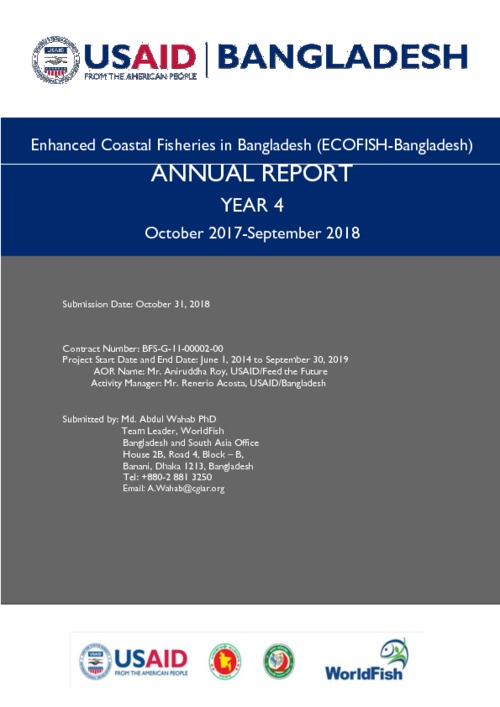ADB_Strengthening community-based natural resource management to safeguard food security in Malaita Province, Solomon Islands_2018_Final

Marine resources are the backbone of the Solomon Islands economy, and form a crucial component of people’s subsistence livelihoods and food security (MDPAC 2016; WorldBank 2017). The sound management of coastal fisheries is therefore a prerequisite for sustainable social and economic development of the ‘Hapi Isles’. The Solomon Island National Plan of Action (NPOA) for the Coral Triangle Initiative for Coral Reefs, Fish and Food Security (CTI-CFF) identified community-based resource management (CBRM) as the national strategy to sustainably manage marine resources (MECM & MFMR 2010). This is based on the recognition of the customary tenure, ecological knowledge and direct dependency on marine resources of coastal communities, as well as of the limited capacity of the government to provide public services in isolated rural communities (Cohen et al. 2014). Over the past twenty years there have been substantial investments by international donors to support CBRM in Solomon Islands. In most cases, this entails that financial support is provided to NGOs who facilitate a process in which a community develops, implements and monitors a fisheries management plan (WorldFish 2013). In most cases such a management plans consist of a marine protected area (MPA) or no-take reserve. There have been notable success-stories, such as the formation of the Tetepare Descendants’ Associations in 2002 and the declaration of the Arnavon Community Marine National Park in 2017. It is however increasingly becoming clear that the current approach will not meet the target identified in the NPOA to manage 50 percent of the country’s coastal areas by 2020 (Govan et al. 2011; Govan et al. 2015). Current CBRM efforts focus on a few priority areas, in most cases very remote, sparsely
populated areas where, paradoxically, fisheries management is least needed (Sukulu et al. 2016).
Moreover, CBRM in its current form requires considerable human and financial resources from external actors, which makes sustaining these interventions in communities in the long-term problematic, and risks undermining customary practices that sustain coastal fisheries in other communities (Govan et al. 2011; Schwarz et al. 2017). Thus, a major challenge for marine conservation in Solomon Islands is to develop a cost-effective CBRM strategy that can be replicated at scale, while recognizing the eclectic and fluid nature of communities, the dynamics and resilience of marine habitats, the variety of customary resource governance systems, and the limited administrative capabilities of national and provincial governments (Govan 2017a; Aswani et al. 2017; Cohen et al 2015).
The aim of the ‘Strengthening community-based natural resource management to safeguard food security in Malaita Province’ project was to develop and test new mechanisms to enable communities to better manage the marine resources on which they depend. Over the past 2 years, the project redefined the CBRM implementation process, and developed a set of innovations to effectively spread and scale-up CBRM: the Malaita Model.
Permalink
Date Available
Type
Countries
Language